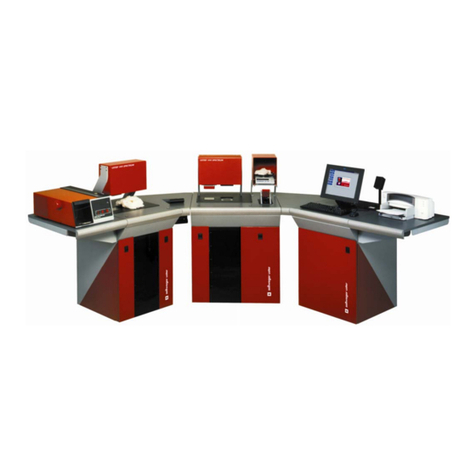
Uster Technologies, Inc.
Software License Agreement
Please read this agreement carefully before using the software. This is a binding agreement between the user and Uster
Technologies, Inc.
GRANT OF LICENSE: Uster Technologies, Inc. grants the user the right to use the software program on a single
computer. Only one copy may be made, solely for backup purposes. This license remains in effect until termination.
Termination occurs when you destroy the program, all copies of the program, and any accompanying documentation.
Also, if you violate any part of this agreement, your license agreement is automatically terminated without notice. Upon
termination, you must destroy all copies of the program along with any documentation.
RESTRICTIONS: You may not translate, reverse engineer, decompile, disassemble, or alter the software in any way.
You may not distribute copies of these programs or their documentation to others. You may not rent or lease the
software; however, you may transfer it along with all written materials on a permanent basis and retain no copies (in
this case this license agreement transfers to the recipient of the software).
LIMITED WARRANTY: Uster Technologies, Inc. warrants the media on which the licensed programs are provided, to be
free from defects in materials and workmanship for ninety (90) days after receipt. Defective media may be returned for
replacement without charge during the 90-day warranty period unless the media has been damaged by accident or
misuse. Uster Technologies, Inc. warrants that the unaltered programs will perform as specified in the accompanying
documentation and are without defects for a period of ninety (90) days from the date of receipt. Due to the complex
nature of the programs, Uster Technologies, Inc. does not warrant that the licensed programs are completely error-free,
will operate without interruption, or are compatible with all equipment and software configurations. Do not use the
programs where significant damage or injury to persons, property, or business may result if an error occurs. There are
no other warranties, expressed or implied, with respect to the licensed programs, their merchantability, or their fitness
for any particular purpose. In no event will Uster Technologies, Inc. be liable for indirect or consequential damages,
including, without limitations, loss of income, loss of information, or business interruption.
Some states do not allow limitations on how long an implied warranty lasts, or the exclusion or limitation of incidental
or consequential damages, so the above limitations and exclusions may not apply to you. These warranties give you
specific legal rights; you may also have other rights, which vary from state to state.
REMEDY FOR REPLACEMENT: At Uster Technologies' option, the software will be replaced or the price refunded if
there is a defect. This warranty is void if the failure of the software occurs due to abuse or misapplication.
Replacement software will be warranted for the remainder of the original warranty period or thirty (30) days, whichever
is longer.
GENERAL TERMS: This license agreement is governed by the laws of the State of Tennessee, USA.
COPYRIGHT: Uster Technologies, Inc. is the owner of the programs and documentation. U.S. Copyright laws apply.
You must treat this software and its documentation as any other copyrighted material.
By using the software, you acknowledge that you have read this agreement, understand it and agree to be bound by its
terms and conditions. You further agree that it is the complete and exclusive statement of the agreement between you
and Uster Technologies, Inc. and supersedes any earlier proposal or prior arrangement, whether oral or written, and
any communications between us relative to the subject matter of this agreement.
If you have any questions regarding this agreement contact us in writing at the following address: Uster Technologies,
Inc., P.O. Box 51270, Knoxville, TN 37950-1270, USA.





























